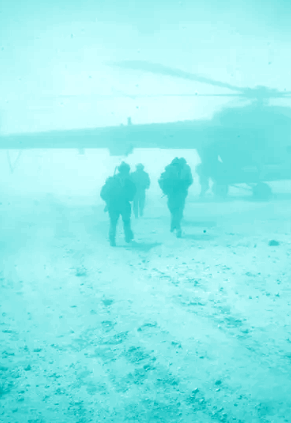War syndrome deciphered
 Researchers appear to have solved the decades-long mystery of Gulf War Illness (GWI), also known as Gulf War Syndrome (GWS).
Researchers appear to have solved the decades-long mystery of Gulf War Illness (GWI), also known as Gulf War Syndrome (GWS).
The disease is a condition affecting veterans of the 1990-1991 Gulf War, characterised by chronic fatigue, pain, neurological and cognitive impairments, and other unexplained symptoms linked to exposure to hazardous agents during service.
A new study, published in PLOS ONE, identifies faulty cell function as the primary cause, linked to intense exposure to biological and chemical agents during service.
Conducted by the National Centre for Neuroimmunology and Emerging Diseases (NCNED) at Griffith University, the study reveals that transient receptor potential ion channels, which are crucial for transporting calcium into cells, are defective in veterans suffering from GWI. This defect disrupts calcium's role as a signalling molecule, affecting muscle contraction, nerve function, and hormone secretion.
“The findings from our research provide clear scientific evidence that the health problems experienced by Gulf War veterans can be directly linked to their exposure to specific hazardous agents during their service,” says Professor Sonya Marshall-Gradisnik, Director of NCNED and a lead author of the study.
“This discovery is a significant step forward in understanding this baffling and complex illness.”
Researcher Etianne Sasso emphasised the importance of the discovery in validating GWI, which has long been a challenge for sufferers to have recognised.
“During the Gulf War, defence personnel faced exposure to a wide range of agents, including environmental stressors and biological and chemical agents. Our research clearly shows cell structures within the human body are sensitive and vulnerable to these agents, causing faulty cell function,” she explained.
“This breakthrough in understanding the cause of GWI now provides hope for researchers to be able to develop new treatments to improve the future for our veterans.”
Gulf War veteran and GWI advocate, Ian Allwood, has expressed his gratitude for the research team's dedication.
“To be believed means the world to us,” he said.
“This research is life-changing for the Gulf War Vets. For those in the veteran community that have been suffering, this is the first step in identifying a causal factor. This is groundbreaking research that will hopefully open pathways to treatment for the often-debilitating symptoms. Our veterans were prepared to lay their lives on the line, representing Australia, in the name of freedom. We owe them a debt of more than gratitude. They have suffered injury as a direct result of their service.”
GWI affects between 25 and 32 per cent of the nearly one million veterans from 41 countries who served in the 1990-1991 Gulf War.
More than 1,800 Australians served, mainly in the Navy, with smaller contributions from the Army and Air Force.
These veterans were exposed to several mandatory vaccines, prophylactic anti-nerve agent drugs, and various hazardous agents, including insecticides, nerve agents, and depleted uranium.
Symptoms of GWI include chronic fatigue, pain, inflammation, sleep disturbances, neurological and cognitive impairment, gastrointestinal and respiratory disorders, and post-exertional malaise.
The full study is accessible here.








 Print
Print